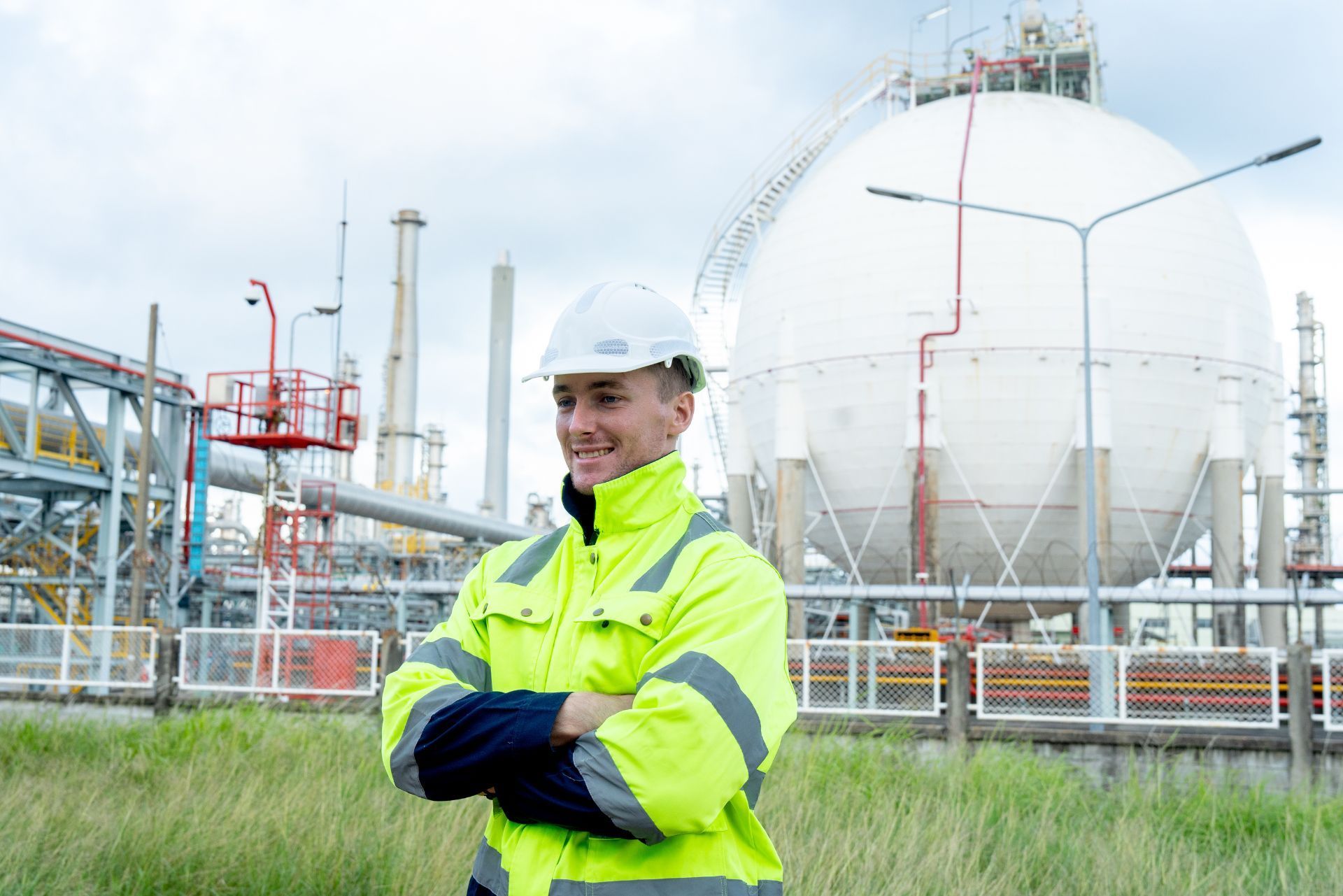Top 3 Recommended Policies

Liquefied Natural Gas (LNG) terminals are critical infrastructure in the global energy supply chain, handling vast volumes of highly volatile fuel. Given the complexity and high value of these assets, comprehensive insurance coverage is essential for LNG terminal operators to safeguard against operational, financial, and environmental risks. This article explores the nuances of LNG terminal operator insurance, the challenges faced by the industry, and how emerging technologies like Artificial Intelligence (AI) are reshaping risk management and insurance practices.
Understanding the Risks in LNG Terminal Operations
LNG terminals involve intricate processes including liquefaction, storage, regasification, and bunkering. Each stage carries inherent risks such as equipment failure, fire, explosion, and environmental contamination. The high asset values combined with complex contractual obligations and exposure to fluctuating commodity markets make risk management a critical priority for operators.
According to industry experts, "The complexity of LNG processing facilities, together with high asset values, complicated contractual arrangements, and exposure to sometimes volatile commodity markets, means it’s critical for owners and operators to have a robust approach to risk management and a comprehensive understanding of the insurance solutions that may help to protect their balance sheet." This underscores the importance of tailored insurance policies that address both physical damage and consequential losses.
Additionally, Floating LNG (FLNG) projects, which are increasingly popular for offshore gas processing, face unique challenges. A 2023 industry analysis revealed that 68% of FLNG projects exceeding $10 billion experience covenant breaches within the first three years of operation. This statistic highlights the financial volatility and operational risks that insurance must adequately cover to maintain project viability.
Moreover, the regulatory landscape surrounding LNG operations is continually evolving, with governments around the world tightening safety standards and environmental regulations. Operators must stay abreast of these changes to ensure compliance, which can further complicate risk management strategies. For instance, new emissions regulations may require significant investment in technology upgrades or operational changes, adding another layer of financial risk. Effective risk management in this context not only involves traditional insurance solutions but also proactive engagement with regulatory bodies and investment in sustainable practices to mitigate potential liabilities.
Furthermore, the geopolitical landscape can significantly impact LNG terminal operations. Political instability in key gas-producing regions can disrupt supply chains, leading to fluctuations in market prices and potential shortages. Operators must navigate these risks by diversifying their supply sources and developing contingency plans to ensure operational continuity. The interplay between global politics and local operations emphasizes the need for a comprehensive risk assessment framework that incorporates both external and internal factors, allowing LNG terminal operators to remain resilient in the face of uncertainty.

Key Components of LNG Terminal Operator Insurance
Insurance for LNG terminals typically encompasses several layers of coverage to mitigate diverse risks:
- Property Insurance: Covers physical damage to terminal infrastructure due to accidents, natural disasters, or operational failures.
- Business Interruption Insurance: Protects against lost revenue and additional expenses incurred when operations are halted due to insured events.
- Liability Insurance: Addresses third-party claims arising from environmental damage, personal injury, or other liabilities linked to terminal operations.
- Environmental Insurance: Specific coverage for pollution and contamination incidents, which are particularly relevant given LNG’s environmental risks.
Experts caution that insurers must evaluate not only the physical loss but also the potential business interruption losses. In some cases, if the required insurance coverage exceeds the maximum underwriting capacity of the market, the facility could become uninsurable. This scenario is especially relevant for large-scale or complex LNG projects where risk exposure is significant and multifaceted.
Moreover, the dynamic nature of the LNG market introduces additional complexities for insurers. Fluctuating global demand, regulatory changes, and technological advancements can all impact the risk landscape. For instance, the rise of floating LNG (FLNG) technology presents unique challenges and opportunities, necessitating specialized insurance solutions that account for the distinct operational risks associated with these innovative facilities. Insurers must stay abreast of industry trends and emerging risks to provide adequate coverage tailored to the evolving needs of LNG terminal operators.
For a deeper dive into the challenges insurers face in underwriting LNG projects, see this expert analysis on LNG terminal insurance capacity. Additionally, the increasing focus on sustainability and environmental responsibility is prompting insurers to incorporate more stringent criteria into their underwriting processes. This shift not only influences the types of coverage available but also encourages LNG operators to adopt best practices that minimize environmental impact and enhance operational safety.
The Role of Artificial Intelligence in LNG Risk Management and Insurance
Artificial Intelligence (AI) is transforming the LNG industry by enhancing safety monitoring, risk assessment, and operational efficiency. Approximately 70% of LNG companies now use AI technologies to improve safety compliance and reduce risk exposure. AI-driven systems can detect anomalies, predict equipment failures, and optimize maintenance schedules, thereby minimizing the likelihood of costly incidents.
One significant benefit of AI integration is a 25% improvement in LNG safety compliance monitoring, which directly contributes to lowering insurance claims and premiums. By proactively managing risks, operators can demonstrate stronger safety records to insurers, potentially unlocking more favorable insurance terms.
Beyond safety, AI is also reshaping broader oil and gas operations. Innovations such as generative AI models are driving high-density innovation, improving exploration, drilling, and production optimization. These advancements indirectly benefit LNG terminal operators by enhancing the overall stability and predictability of supply chains and operations.
Moreover, AI's predictive analytics capabilities allow LNG companies to assess market trends and demand fluctuations with unprecedented accuracy. By analyzing vast datasets, AI can forecast price movements and optimize inventory levels, ensuring that companies are well-prepared for market shifts. This level of foresight not only aids in financial planning but also enhances operational agility, enabling companies to respond swiftly to changes in demand or supply disruptions.
Additionally, the integration of AI in LNG operations fosters a culture of continuous improvement. Machine learning algorithms can analyze historical incident data to identify patterns and root causes of failures, leading to more effective training programs for personnel. By equipping employees with insights derived from AI, companies can cultivate a more knowledgeable workforce, ultimately enhancing safety protocols and operational efficiency across the board. This holistic approach to risk management not only safeguards assets but also strengthens the overall resilience of the LNG supply chain.
For more insights on AI’s impact on the oil and gas sector, including LNG, this recent study on AI in oil and gas offers a comprehensive overview.
Insurance Market Trends for LNG Bunkering and Terminal Facilities
The LNG bunkering facility insurance market is a growing segment, driven by the increasing adoption of LNG as a marine fuel. Europe currently leads this market, accounting for roughly 33% of the global market value in 2024, which translates to approximately USD 442 million. This regional dominance reflects Europe's strong regulatory environment and commitment to cleaner marine fuels. The European Union's stringent emissions targets and initiatives to reduce greenhouse gas emissions have significantly influenced the shift towards LNG, making it a preferred choice for ship operators looking to comply with environmental regulations.
As LNG bunkering facilities expand, insurers are adapting their products to address unique risks associated with fuel storage, transfer, and bunkering operations. These include risks related to cryogenic materials, transfer system failures, and environmental contamination. The evolving insurance landscape requires operators to stay informed about emerging coverage options and market capacity. Furthermore, the complexity of LNG operations necessitates a thorough understanding of risk management practices, as incidents can lead to substantial financial losses and reputational damage. Insurers are now focusing on providing tailored solutions that not only cover traditional risks but also incorporate advanced technologies such as real-time monitoring systems and predictive analytics to mitigate potential hazards.
Understanding these market dynamics is crucial for LNG terminal operators seeking to optimize their insurance portfolios. More detailed market insights can be found in this industry report on LNG bunkering facility insurance. Additionally, as the market matures, collaboration between insurers and terminal operators is becoming increasingly important. Joint initiatives aimed at improving safety standards and operational efficiencies can lead to more favorable insurance terms, ultimately benefiting both parties. The integration of industry best practices and lessons learned from past incidents can further enhance the resilience of LNG operations, paving the way for a more robust insurance framework that supports the growth of this vital sector.

Challenges and Future Outlook for LNG Terminal Insurance
Despite advances in technology and insurance products, LNG terminal operators face ongoing challenges in securing comprehensive coverage. The sheer scale and complexity of modern LNG projects, combined with volatile commodity prices and geopolitical uncertainties, create a dynamic risk environment. These factors are further compounded by the increasing frequency of extreme weather events, which can disrupt operations and pose additional risks that traditional insurance models may not adequately address.
Moreover, the insurance market’s underwriting capacity can be strained by large-scale projects, especially floating LNG terminals. When insurance requirements exceed market limits, operators may struggle to find adequate coverage, potentially impacting project financing and operational continuity. The need for specialized coverage that addresses the unique risks associated with LNG operations is becoming more critical, as standard policies may not provide sufficient protection against risks such as equipment failure, environmental liabilities, and regulatory changes.
Looking ahead, the integration of AI and data analytics is expected to further enhance risk assessment accuracy and insurance underwriting. This will likely lead to more customized insurance solutions that better reflect the unique risk profiles of individual LNG terminals. By leveraging predictive analytics, insurers can gain insights into potential risk factors, allowing for more proactive risk management strategies and tailored coverage options that align with the specific operational needs of each terminal.
Operators and insurers alike must remain agile, embracing technological innovations and evolving risk management strategies to navigate the complexities of the LNG industry successfully. Collaboration between stakeholders, including terminal operators, insurers, and regulatory bodies, will be essential in developing frameworks that address emerging risks while fostering a more resilient insurance market. Furthermore, as the global energy landscape shifts towards more sustainable practices, the insurance industry may also need to adapt its offerings to accommodate the growing emphasis on environmental, social, and governance (ESG) criteria, ensuring that LNG operations align with broader sustainability goals.
Conclusion
Insurance for LNG terminal operators is a multifaceted and evolving field, reflecting the high stakes and complexities of LNG infrastructure. Robust insurance coverage that includes property, business interruption, liability, and environmental protections is essential to safeguard assets and financial stability.
The integration of AI technologies is revolutionizing risk management, improving safety compliance, and enabling more precise insurance underwriting. Meanwhile, market trends such as the growth of LNG bunkering insurance and the challenges of insuring large-scale FLNG projects highlight the need for informed and adaptive strategies.
By understanding these elements and staying abreast of industry developments, LNG terminal operators can better protect their investments and ensure resilient operations in an increasingly dynamic energy landscape.
For an overview of how AI is enhancing safety monitoring and risk assessment in LNG operations, visit this
AI integration statistic in LNG industry.
Contact Us
Phone
Location
9595 Six Pines Dr, Suite 8210, The Woodlands, TX 77380

